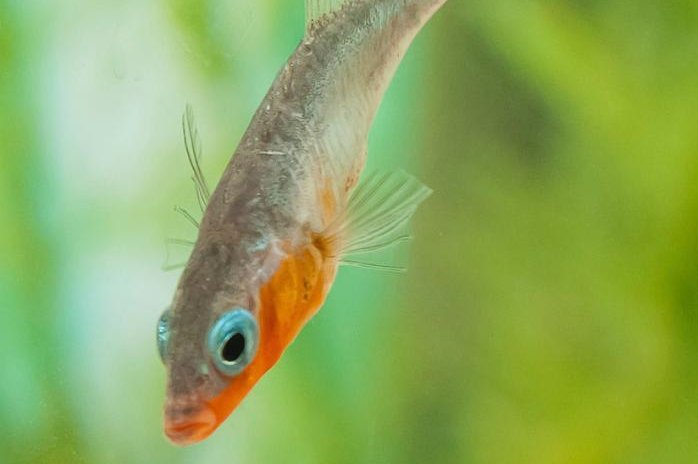Female stickleback fish prefer to mate only with males who know how to build the right kind of nest for the occasion. Photo by University of Leicester
LEICESTER, England, Nov. 3 (UPI) -- When choosing a mate, the female stickleback fish looks for a male that's handy around the house and quick on his feet -- or fins.
More specifically, she prefers a mate who can build the right kind of nest. The "right" kind of nest is always changing, however, shifting with environmental conditions.
As new research revealed, male stickleback fish alter the structure of their nests based on oxygen levels. They do so to ensure their offspring get plenty of oxygen as they mature inside their eggs.
As lab experiments showed, when oxygen levels are low, male sticklebacks build looser nests, making it easier to fan oxygen through to the eggs. But a loose nest isn't ideal, as it leaves the eggs more vulnerable to discovery by nosy predators. When oxygen levels are high, males tighten things up.
Proper nest design is imperative for keeping offspring alive until they're ready to make it on their own. It is also imperative if males want to produce offspring in the first place. Females aren't turned on by the wrong kind of nest.
In follow-up lab tests, researchers found oxygen levels don't just influence male behavior. Females shifted their nest preference, too. Female stickleback fish preferred to mate with males who had built the nest most suitable for the present environmental conditions.
"They did not always choose a particular nest design, but they chose the nest that was best designed for the particular conditions they were experiencing at the time," researcher Megan Head said in a news release. "Interestingly, this flexibility was limited to their nest preferences: females always chose the biggest, most vigorously courting males irrespective of the oxygen level."
Head -- a former researcher at the University of Leicester, now at the Australian National University -- is the lead author of a new paper on the peculiar stickleback mating and house-building behaviors, published this week in the journal Evolution.
Researchers say the new evidence suggests sticklebacks are uniquely suited to adapt to quickly changing conditions.
"One reason that sticklebacks might have this ability, and why they may be so good at adapting to new environments, is that they have evolved under really changeable conditions," added Rebecca Fox, a marine biologist at the University of Technology Sydney. "Originally sticklebacks were found only in the sea, but they have successfully colonized freshwaters around the world."
As marine biologists work to better understand how a warming climate and shifting chemical composition in the ocean will impact flora and fauna, quickly adapting species like stickleback fish may serve as ideal models for study.















